How do polar bears stay warm with those freezing temperatures, icy water, and relentless wind in the Arctic? What keeps a polar bear warm when its natural habitat is so harsh? This simple but classic polar bear blubber experiment will help kids feel and see what keeps those big guys (and gals) warm! Simple winter science experiments help to shape kids’ minds!
HOW DO POLAR BEARS STAY WARM?
POLAR BEAR BLUBBER EXPERIMENT
To start this experiment, you need to ask your kids a few questions and get them thinking Ask your kids how they think polar bears stay warm when swimming around in the icy arctic water. What about them keeps them warm if they don’t wear clothes like us. Why don’t polar bears start to freeze in the water? Hint: there’s a thick layer of fat included! Brrr…
YOU WILL NEED THE FOLLOWING:
- Large container or bowl
- Lots of ice cubes
- Vegetable shortening
- Two plastic baggies (Ziplock Bags)
- Duct tape
- Food Coloring (optional)

HOW TO SET UP YOUR BLUBBER EXPERIMENT
Before you begin, you may want to pair this lesson with the scientific method. You can use this with younger and older students with simple alterations that you can read about here.
Check below for another option to extend the learning or to lessen the mess!
STEP 1. First, you need to fill a large bowl with a good amount of ice and water. Add blue food coloring if desired.
STEP 2. Next, have your kid place his/her hand briefly in the water. It’s cold! There’s no need to linger in the water for safety.

STEP 3. Now, for the messy part, fill one plastic bag with shortening.
STEP 4. Have your kids place one hand in another bag and the other hand inside the blubber/fat-filled bag. Seal the tops with duct tape so water can’t get into the bags. Make sure to move the fat around, so it covers your hand completely.
NOTE: For a less messy version, see below!
Fun Fact: Polar Bears have 4″ thick layers of blubber to keep them toasty and store nutrients when there isn’t much food available.

STEP 5. Put the bag-covered hands in the freezing water. What do they notice? Does the water feel less cold or not?

ALTERNATE BLUBBER GLOVE
You can use two gloves with vegetable shortening for a less messy way. For a less messy version, go ahead and cover the outside of one bag with shortening, place that bag inside another bag, and seal everything tightly! This way, your hand stays clean inside the bag, and the shortening is sandwiched between two bags.
This also allows older students to test different kinds of insulators because of the sandwich method. What else can be used between the two layers of bags? This turns it into a true science experiment for kids in older grades. Make sure to write out a hypothesis before getting started. Read up on the scientific method here.
- Butter
- Cotton Balls
- Packing Peanuts
- Sand
- Feathers
HOW DO POLAR BEARS STAY WARM?
If your kids haven’t already guessed what keeps polar bears warm, they will have a better idea once they make their own polar bear blubber glove! Blubber or a thick layer of fat keeps them warm. Polar bears are warm-blooded mammals like us! What the heck are they doing in the Arctic?
The blubber also stores nutrients needed for survival in this harsh climate. Learn more about the Arctic with Biomes of the World!
Of course, polar bears aren’t covered in cooking lard like Crisco, but they have their own kind of lard called blubber that helps out. The fat molecules in shortening work in a similar way to that of blubber! However, several special adaptations work together for maximum heat retention.
POLAR BEAR ADAPTATIONS
Polar bears use a combination of fur and blubber to keep warm. Thick fur and thick fat keep these warm-blooded mammals warm in temperatures up to -50 degrees! That’s pretty cold.
They have two types of fur. These bears have long, oily, hollow hairs that help keep water away but also help trap heat. The second type of fur consists of short insulating hairs. These hairs keep heat close to the skin.
Oh, and did you know these magnificent creatures with whitish fur, actually have black skin? This also helps to keep polar bears warm by absorbing the sun’s rays.
Some adaptations include small ears, so the ears don’t get too cold, “sticky” pads for gripping ice, and 42 very sharp teeth for catching their dinner!
POLAR BEAR By Candace Fleming ad Eric Rohman is an excellent addition to your winter theme library. It’s a fantastic mix of non-fiction storytelling filled with engaging text and plenty of good information! (Amazon Affiliate Link) You can also pair this with the research sheet I added at the end of the article.
ARE POLAR BEARS BUOYANT?
What’s under the black skin? The blubber, of course! The blubber is a thick layer below the skin that can be up to 4.5 inches thick! WOW! It now only helps them stay warm, but it also helps to keep them afloat. You can check out this simple buoyancy science experiment to learn more about that!
Blubber is stored up fat. It creates a cozy blanket for the polar bear when combined with different types of fur. It also has another useful property in that it can help provide life-sustaining energy when food sources are scarce. Blubber is important to the life of a polar bear!
ALSO CHECK OUT: How Do Whales Stay Warm?

WINTER SCIENCE ACTIVITY
The winter season is a terrific time to explore different science concepts and keep the excitement of science alive! Learning about animals and animal habitats is always a favorite of young kids. Use this science experiment with small groups in the classroom or with several kids at home!
So next time you want to share something fun with the kids or if you are exploring an arctic unit, break out this polar bear blubber experiment. We will share a few more fun facts with you about how polar bears keep warm, and this winter science activity is a great hands-on way for kids to feel it as well.
You may also want to make a polar bear puppet or a paper plate polar bear craft!
Read below the activity for a bit of science behind the chilly fun, and see how polar bears brave the elements in style. Oh, and make sure your kids know that polar bears and penguins don’t hang out together!
Learn what role polar bears have in the food chain.
FREE Printable Winter STEM Guide
More fun and easy winter science activities can be found here.
MORE FUN ICY ACTIVITIES
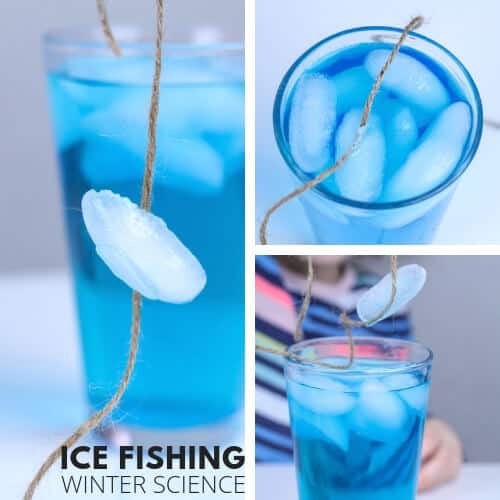
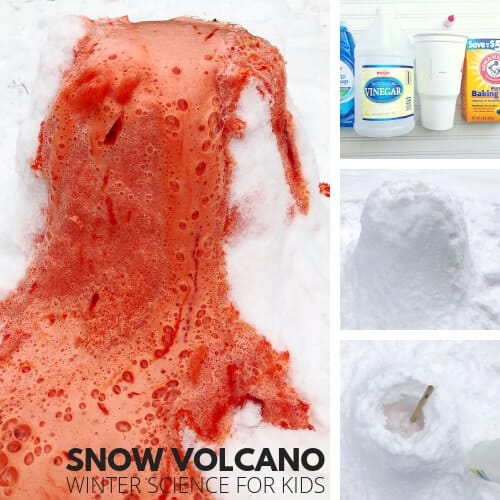

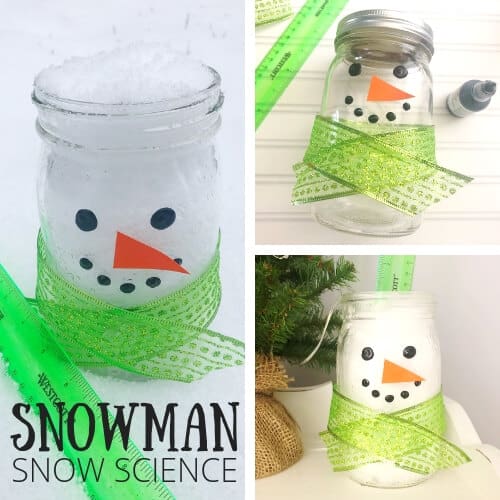

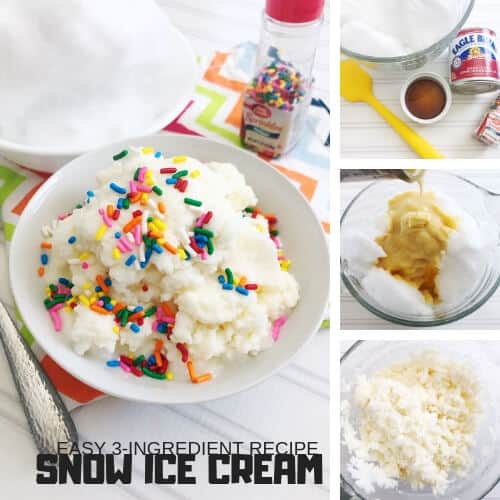
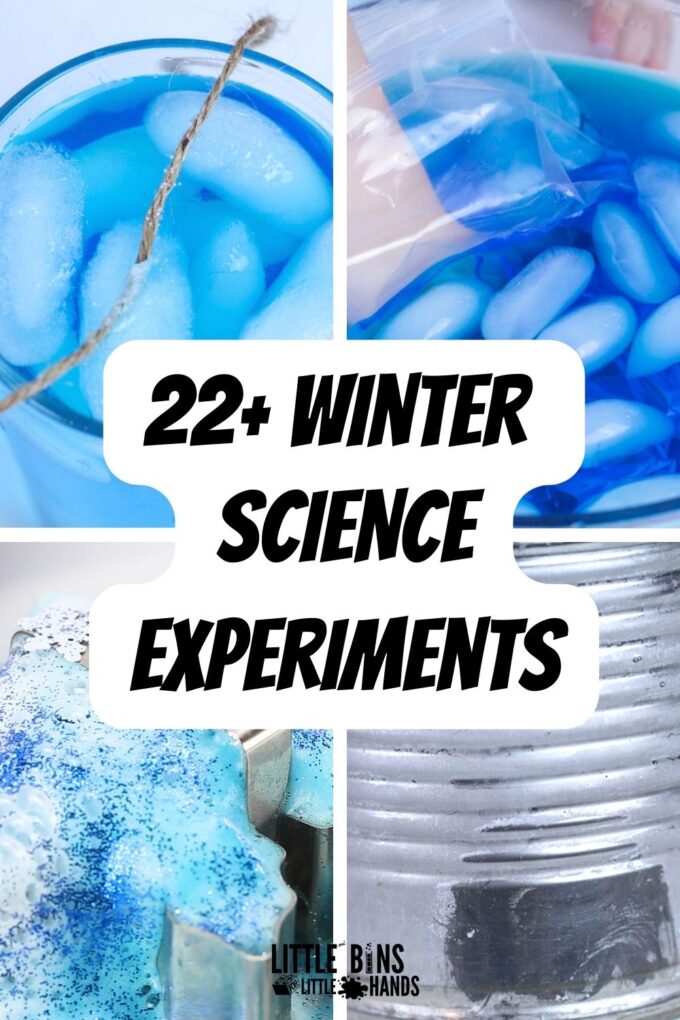


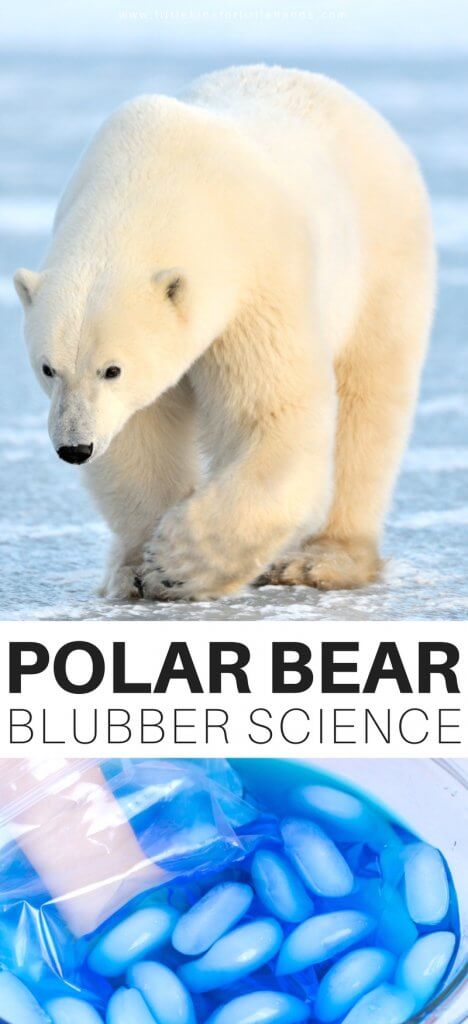
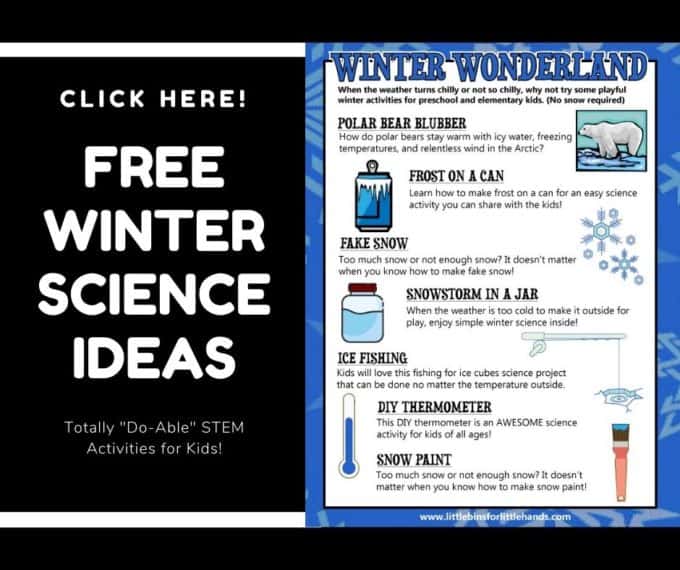







Is there something we can use as a substitute for shortening? Because our schools is remote learning parents have to have any supplies we need available in their homes. I worry this may not be a pantry staple for all our families.
Thank you!
Hmm, butter is not going to be as good and may be more wasteful than picking up a tub of sshortening. Other than that maybe someone else has a good idea and can reply to you!